-
 Bitcoin
Bitcoin $102,881.1623
-0.60% -
 Ethereum
Ethereum $2,292.8040
-5.48% -
 Tether USDt
Tether USDt $1.0004
0.02% -
 XRP
XRP $2.0869
-2.02% -
 BNB
BNB $634.6039
-1.35% -
 Solana
Solana $136.1527
-3.00% -
 USDC
USDC $1.0000
0.01% -
 TRON
TRON $0.2728
-0.45% -
 Dogecoin
Dogecoin $0.1572
-3.70% -
 Cardano
Cardano $0.5567
-5.07% -
 Hyperliquid
Hyperliquid $34.3100
-1.20% -
 Bitcoin Cash
Bitcoin Cash $462.5691
-2.33% -
 Sui
Sui $2.5907
-5.21% -
 UNUS SED LEO
UNUS SED LEO $8.9752
1.13% -
 Chainlink
Chainlink $12.0549
-4.93% -
 Stellar
Stellar $0.2381
-2.36% -
 Avalanche
Avalanche $16.9613
-3.47% -
 Toncoin
Toncoin $2.8682
-2.36% -
 Shiba Inu
Shiba Inu $0.0...01095
-3.70% -
 Litecoin
Litecoin $81.8871
-2.43% -
 Hedera
Hedera $0.1377
-5.36% -
 Monero
Monero $310.8640
-0.68% -
 Ethena USDe
Ethena USDe $1.0007
0.03% -
 Dai
Dai $1.0001
0.03% -
 Polkadot
Polkadot $3.3103
-5.19% -
 Bitget Token
Bitget Token $4.2168
-1.95% -
 Uniswap
Uniswap $6.4643
-8.14% -
 Pepe
Pepe $0.0...09329
-7.42% -
 Pi
Pi $0.5111
-5.23% -
 Aave
Aave $235.2340
-5.77%
What is the royalty mechanism of NFT projects? How to affect returns?
NFT royalty mechanisms let creators earn ongoing income from secondary sales, but inconsistent platform enforcement and bypass tactics challenge their effectiveness.
Jun 22, 2025 at 01:21 pm
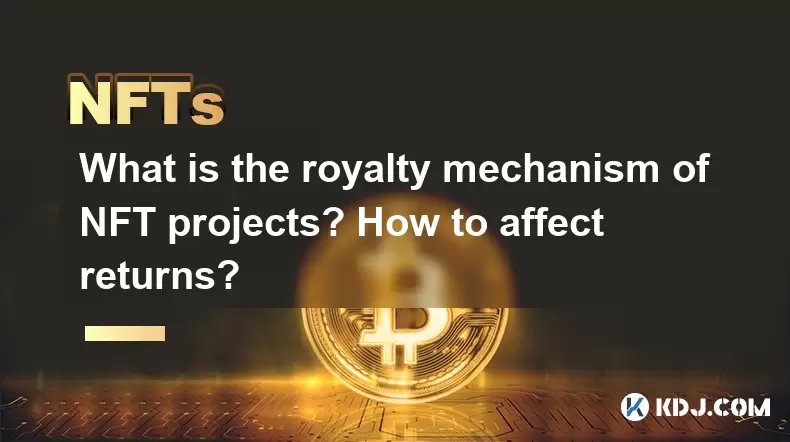
Understanding the Royalty Mechanism in NFT Projects
The royalty mechanism in NFT projects refers to a system that allows creators to earn a percentage of sales every time their NFTs are resold on secondary marketplaces. Unlike traditional art or digital content markets, where artists typically only profit from the initial sale, NFTs enable ongoing compensation through smart contracts.
This mechanism is coded directly into the smart contract of the NFT during its minting process. When an artist or creator sets up their NFT collection, they can specify a royalty rate — usually between 1% and 10%. Every time an NFT from that collection is sold on a marketplace like OpenSea, LooksRare, or Blur, the original creator receives the agreed-upon percentage automatically.
How Royalties Are Enforced Across Platforms
Not all NFT marketplaces enforce royalties equally. Some platforms respect the royalty settings embedded in the NFT's smart contract, while others allow buyers and sellers to bypass them entirely. This inconsistency has led to debates within the NFT community about the effectiveness and fairness of royalty enforcement.
- Marketplaces such as LooksRare and X2Y2 historically honored royalty payments unless users chose alternative routes.
- OpenSea, one of the largest NFT marketplaces, shifted toward optional royalties after introducing its "token-gated" listings feature.
- Newer platforms like Blur have taken a user-centric approach by allowing traders to avoid paying royalties altogether.
This variability affects how consistently creators receive ongoing income from their work.
Impact of Royalties on Creator Revenue
For creators, the royalty mechanism significantly enhances long-term earnings potential. If an NFT appreciates in value over time and is frequently traded, the original creator continues to benefit financially. This model aligns with real-world scenarios like music royalties or book residuals, but now applied to digital collectibles, artwork, and metaverse assets.
For example:
- An artist sells an NFT for 0.5 ETH initially and sets a 5% royalty.
- The NFT is later resold for 2 ETH, generating the artist 0.1 ETH in passive income.
- If it changes hands multiple times, the cumulative royalty payments can surpass the initial sale amount.
This dynamic encourages high-quality creation and incentivizes artists to build strong communities around their work.
Effect of Royalty Mechanisms on Secondary Market Activity
While beneficial to creators, the presence of royalties can influence buyer behavior and trading volume. Collectors may be hesitant to purchase NFTs with high royalty rates if they plan to flip them quickly, as this reduces their net profit margin.
Some collectors argue that high royalty percentages place an unfair burden on secondary buyers, especially when resales occur frequently. In contrast, others support the system as a way to sustain artistic innovation and fair compensation.
Market trends show that collections with reasonable royalty structures tend to maintain healthier liquidity and broader adoption across marketplaces.
Royalty Bypass Techniques and Their Implications
With the rise of no-royalty marketplaces, some users exploit mechanisms to bypass royalty payments. One common method involves wrapping NFTs using protocols like Seaport Pro or Immutable X, which obscure the original creator’s royalty instructions.
Other strategies include:
- Using cross-chain bridges to transfer NFTs to blockchains where royalty enforcement isn't standard.
- Minting derivative versions of popular NFTs to circumvent original creator royalties.
These practices raise legal and ethical concerns. While technically feasible, they challenge the intended purpose of the royalty system and can erode trust in NFT ecosystems.
Choosing the Right Royalty Strategy for Your Project
When launching an NFT project, setting the appropriate royalty percentage requires strategic thinking. Too high, and it might deter secondary market activity; too low, and it could undermine the creator’s long-term revenue.
Factors to consider include:
- The popularity and demand for similar NFTs
- The community-building efforts behind the project
- The reputation and track record of the creator
Creators should also research which marketplaces support royalty enforcement and whether their target audience prefers platforms with or without mandatory royalties.
Additionally, transparency is key. Clearly communicating the royalty structure helps build trust and ensures collectors understand what they're supporting when they buy into a project.
Frequently Asked Questions (FAQ)
Q: Can I change the royalty percentage after my NFTs are minted?
A: Most NFT smart contracts do not allow changing the royalty rate post-minting. It's crucial to set the desired percentage before deployment.
Q: Do all blockchains support royalty mechanisms?
A: No. Ethereum-based NFTs support royalties via EIP-2981 standards, while other chains like Solana or Polygon may have different implementations or lack native royalty support.
Q: What happens if a marketplace doesn’t honor royalties?
A: Creators lose out on passive income from secondary sales. Some creators choose to launch exclusively on platforms that enforce royalties to protect their revenue streams.
Q: Are there legal protections for NFT creators regarding royalties?
A: Legal frameworks are still evolving. Currently, royalty enforcement relies more on platform policies than legal mandates, though discussions around intellectual property rights continue.
Disclaimer:info@kdj.com
The information provided is not trading advice. kdj.com does not assume any responsibility for any investments made based on the information provided in this article. Cryptocurrencies are highly volatile and it is highly recommended that you invest with caution after thorough research!
If you believe that the content used on this website infringes your copyright, please contact us immediately (info@kdj.com) and we will delete it promptly.
- Bitcoin Dominance, Mideast Conflict, and Altcoin Pressure: A Crypto Conundrum
- 2025-06-22 18:25:12
- Bitcoin, Stocks, and Gold: Echoes of the Past, Glimpses of the Future
- 2025-06-22 18:25:12
- Avalanche vs. Ruvi AI: Is a Six-Figure Fortune More Likely?
- 2025-06-22 18:45:12
- Stock Market News, Weekly Review: June 2025 - What You Need to Know
- 2025-06-22 18:45:12
- NFT Sales Crossroads: Polygon's Rise, Ethereum's Challenge
- 2025-06-22 19:05:12
- Meta Whale CES Token: A Web3 Launch Revolutionizing the Metaverse
- 2025-06-22 19:05:12
Related knowledge
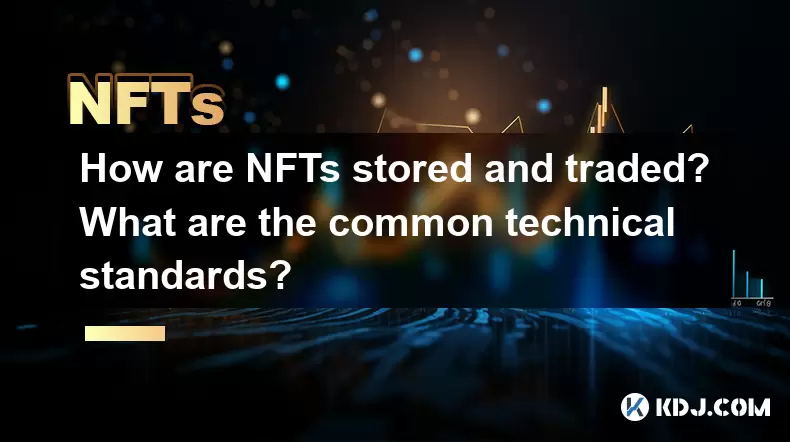
How are NFTs stored and traded? What are the common technical standards?
Jun 20,2025 at 08:49am
Understanding NFT Storage MechanismsNon-Fungible Tokens (NFTs) are digital assets that represent ownership of a unique item or piece of content, such as art, music, videos, or virtual real estate. The way NFTs are stored is crucial to their security and accessibility. Most NFTs are built on blockchain platforms like Ethereum, and the actual file—such as...
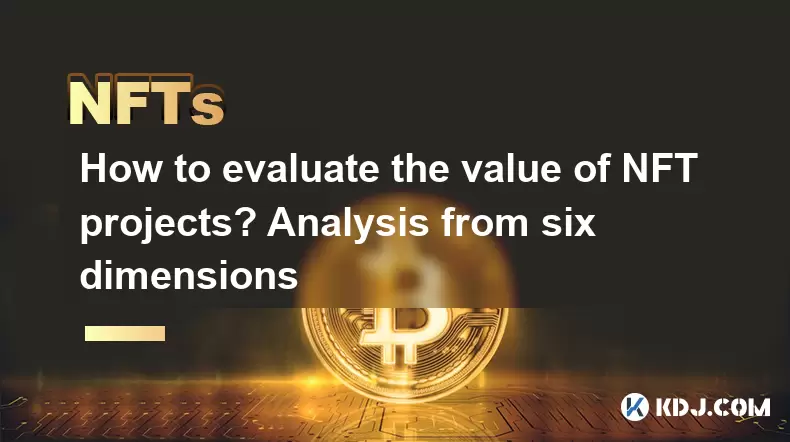
How to evaluate the value of NFT projects? Analysis from six dimensions
Jun 21,2025 at 02:28pm
1. Project Background and Team CredibilityEvaluating the value of NFT projects begins with a thorough understanding of its background and team composition. A credible project is usually backed by experienced developers, designers, and marketers who have a proven track record in blockchain or digital art industries. The presence of identifiable team memb...

What is the difference between NFT and digital collectibles? A must-read guide for beginners
Jun 19,2025 at 09:42pm
Understanding the Basics of NFTsNFTs, or Non-Fungible Tokens, are unique digital assets that represent ownership of a specific item or piece of content on the blockchain. Unlike cryptocurrencies such as Bitcoin or Ethereum, which are fungible and can be exchanged one-for-one, each NFT has distinct properties and cannot be directly replaced by another to...
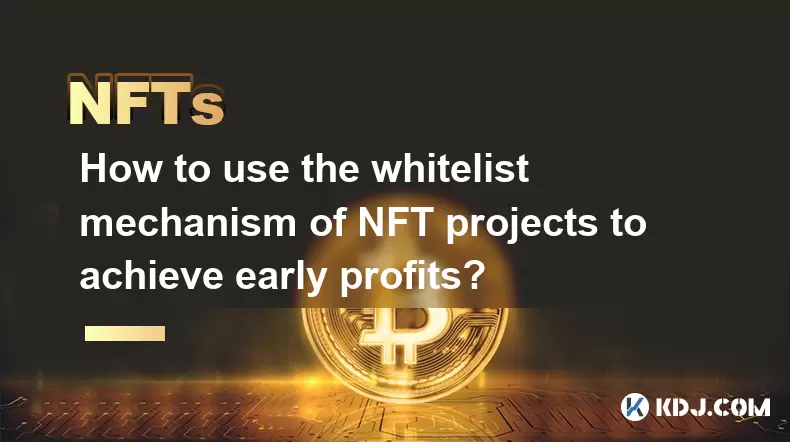
How to use the whitelist mechanism of NFT projects to achieve early profits?
Jun 21,2025 at 03:49am
Understanding the Whitelist Mechanism in NFT ProjectsThe whitelist mechanism is a popular strategy used by NFT project developers to allocate early access or exclusive minting rights to a select group of users. This system allows participants on the whitelist to mint NFTs before they are released to the general public, often at lower prices and with few...
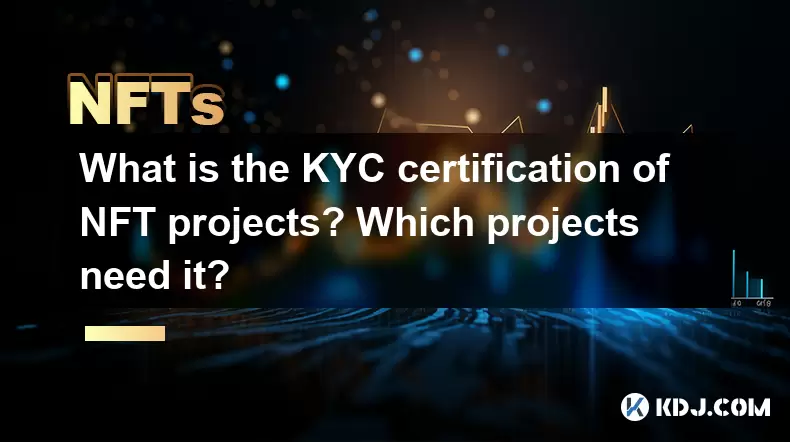
What is the KYC certification of NFT projects? Which projects need it?
Jun 21,2025 at 03:08pm
Understanding KYC Certification in the NFT SpaceKYC, or Know Your Customer, is a regulatory process used by businesses to verify the identity of their clients. In the context of NFT projects, KYC certification refers to the verification of user identities before they can participate in minting, trading, or selling NFTs on a platform. This practice is in...
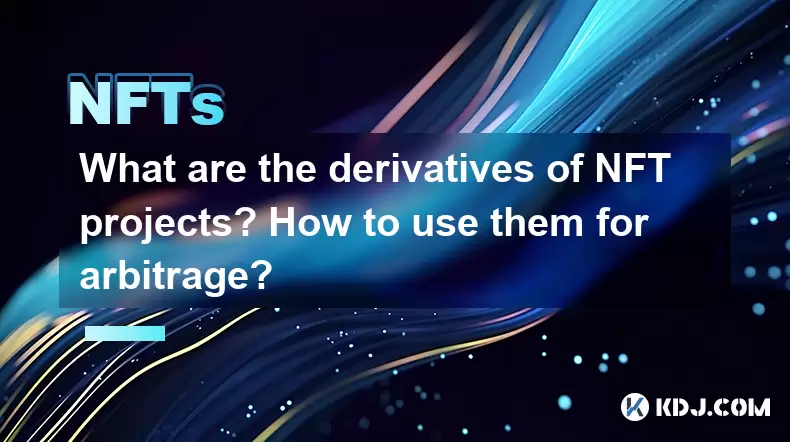
What are the derivatives of NFT projects? How to use them for arbitrage?
Jun 20,2025 at 06:14am
Understanding the Derivatives of NFT ProjectsNFTs, or non-fungible tokens, have evolved beyond simple digital collectibles. In recent years, derivatives of NFT projects have emerged as a new financial layer within the blockchain ecosystem. These derivatives are essentially financial instruments derived from the value and performance of underlying NFT as...

How are NFTs stored and traded? What are the common technical standards?
Jun 20,2025 at 08:49am
Understanding NFT Storage MechanismsNon-Fungible Tokens (NFTs) are digital assets that represent ownership of a unique item or piece of content, such as art, music, videos, or virtual real estate. The way NFTs are stored is crucial to their security and accessibility. Most NFTs are built on blockchain platforms like Ethereum, and the actual file—such as...

How to evaluate the value of NFT projects? Analysis from six dimensions
Jun 21,2025 at 02:28pm
1. Project Background and Team CredibilityEvaluating the value of NFT projects begins with a thorough understanding of its background and team composition. A credible project is usually backed by experienced developers, designers, and marketers who have a proven track record in blockchain or digital art industries. The presence of identifiable team memb...

What is the difference between NFT and digital collectibles? A must-read guide for beginners
Jun 19,2025 at 09:42pm
Understanding the Basics of NFTsNFTs, or Non-Fungible Tokens, are unique digital assets that represent ownership of a specific item or piece of content on the blockchain. Unlike cryptocurrencies such as Bitcoin or Ethereum, which are fungible and can be exchanged one-for-one, each NFT has distinct properties and cannot be directly replaced by another to...

How to use the whitelist mechanism of NFT projects to achieve early profits?
Jun 21,2025 at 03:49am
Understanding the Whitelist Mechanism in NFT ProjectsThe whitelist mechanism is a popular strategy used by NFT project developers to allocate early access or exclusive minting rights to a select group of users. This system allows participants on the whitelist to mint NFTs before they are released to the general public, often at lower prices and with few...

What is the KYC certification of NFT projects? Which projects need it?
Jun 21,2025 at 03:08pm
Understanding KYC Certification in the NFT SpaceKYC, or Know Your Customer, is a regulatory process used by businesses to verify the identity of their clients. In the context of NFT projects, KYC certification refers to the verification of user identities before they can participate in minting, trading, or selling NFTs on a platform. This practice is in...

What are the derivatives of NFT projects? How to use them for arbitrage?
Jun 20,2025 at 06:14am
Understanding the Derivatives of NFT ProjectsNFTs, or non-fungible tokens, have evolved beyond simple digital collectibles. In recent years, derivatives of NFT projects have emerged as a new financial layer within the blockchain ecosystem. These derivatives are essentially financial instruments derived from the value and performance of underlying NFT as...
See all articles
























































































